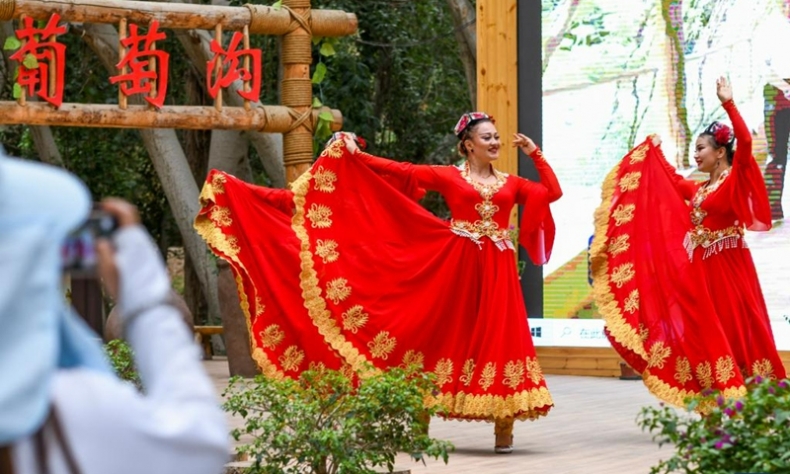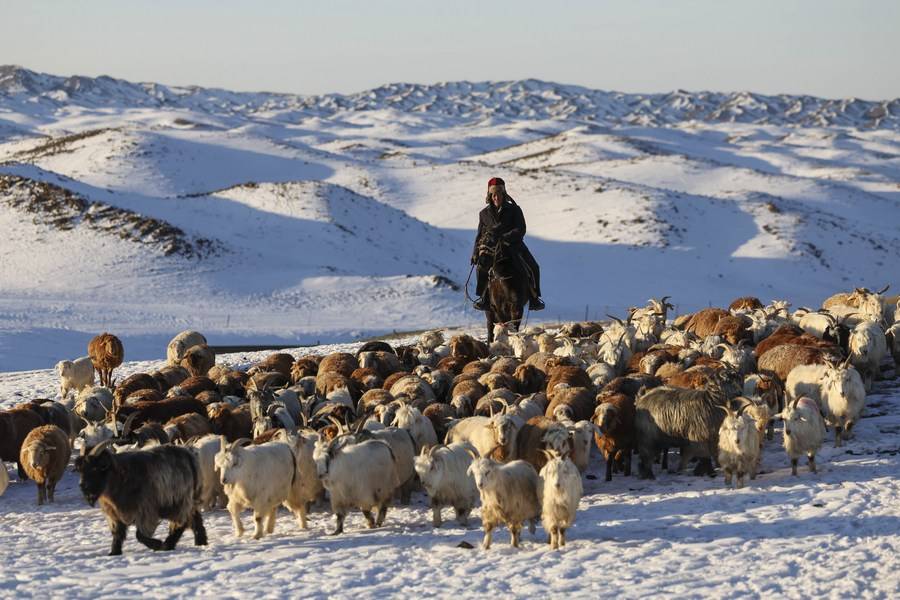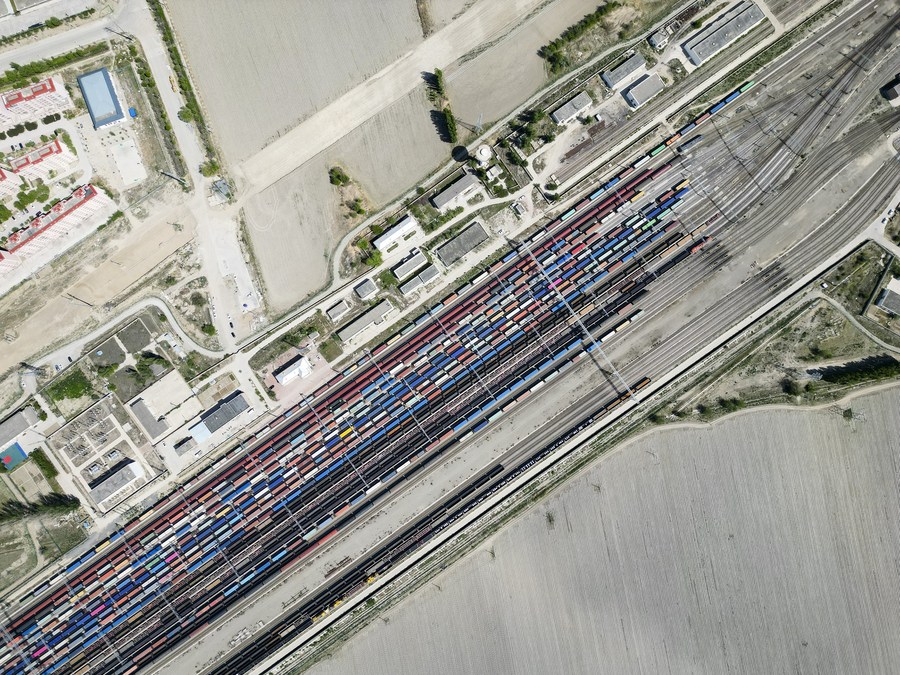Pursuing Advancement

Facts speak louder than words. The high-quality development of Xinjiang is a vivid portrayal of China’s human rights progress and a response to the external slanders and smears against the human rights situation in the region.
Xinjiang Uygur Auto-nomous Region is situated in northwest China and at the heart of the Eurasian continent. Since ancient times, the vast region of today’s Xinjiang has been home to multiple ethnic groups, different cultures and several religions. It has also been an important channel for exchange between civilizations of the East and the West, and was an important section of the ancient Silk Road, which linked China and Europe.
Over the years, major progress has been made in Xinjiang’s modernization, and unprecedented achievements have been attained in promoting and enhancing human rights there.
Development matters
Upholding the leadership of the Communist Party of China (CPC) is not only the fundamental guarantee for human rights progress in Xinjiang, it also ensures the pursuit of modernization always puts the people first by promoting the free and well-rounded development of all individuals.
The report to the 20th CPC National Congress in October 2022 said, “The central task of the CPC will be to lead the Chinese people of all ethnic groups in a concerted effort to realize the Second Centenary Goal of building China into a great modern socialist country in all respects and to advance the rejuvenation of the Chinese nation on all fronts through a Chinese path to modernization.”
Xinjiang has the largest number of land ports in China. It plays an irreplaceable role and holds a crucial position in the development of the Silk Road Economic Belt. The Silk Road Economic Belt and the 21st-Century Maritime Silk Road together constitute the Belt and Road Initiative, which was proposed by Chinese President Xi Jinping in 2013 to boost connectivity along and beyond the ancient Silk Road routes.
Xinjiang’s development in domains including human rights is reliant on the maintenance of its peace and stability.

Separatism is the hotbed in which terrorism and extremism take root in Xinjiang. For a long time, terrorist and extremist forces had been beating the drum for separatist activities by distorting, fabricating and falsifying the history of Xinjiang, exaggerating the cultural differences between ethnic groups, instigating isolation and hatred, and advocating religious extremism, The Fight Against Terrorism and Extremism and Human Rights Protection in Xinjiang, a white paper released by the State Council Information Office in March 2019, said.
Those terrorist, extremist and separatist efforts were bolstered by external anti-China forces, which frequently challenged China on Xinjiang-related issues, and deliberately abused the concepts of ethnicity, religion and human rights to organize, plan and carry out acts of separatism and sabotage.
In accordance with the law, Xinjiang has been firm and effective in ridding itself of activities that violate human rights, endanger public security, undermine ethnic unity and split the country. People of all ethnic groups in Xinjiang aspire to live in a safe, secure society, and over the past five years in particular, law-based deradicalization efforts and the fight against terrorism have met this expectation, with the public’s sense of security increasing to 99.1 percent, according to the local government work report in 2023.
In 1993, a consensus emerged at the Second UN World Conference on Human Rights in Vienna, Austria. The Vienna Declaration and Programme of Action adopted there reaffirmed that the right to development is “a universal and inalienable right and an integral part of fundamental human rights.”
China has always adhered to a people-centered approach in pursuing development, and ensured that people enjoy full, extensive, genuine, concrete and effective human rights in accordance with the law.
Xinjiang has won its tough battle against absolute poverty on schedule. As of late 2020, more than 2.7 million rural residents in Xinjiang had lifted themselves out of poverty, and 3,666 villages and 32 counties were no longer classified as poor. The per-capita disposable income of its urban and rural residents grew at an average annual rate of 4.5 and 8.4 percent, respectively, from 2018 to 2022.
China believes that the people of every country have the right to independently choose their path of human rights development according to national conditions. It firmly opposes the politicization of human rights, the exercise of double standards, and the interference in the internal affairs of other countries, and calls for respecting the sovereignty, independence and territorial integrity of all countries to jointly promote world peace and development.

China takes the rights to subsistence and development as basic human rights of paramount importance. Keeping this in mind, Xinjiang focuses on developing the local economy, improving people’s living standards, and achieving modernization characterized by unity, harmony, prosperity, and cultural progress, with people living and working in peace and contentment.
Better governance
On the path toward modernization, Xinjiang needs to take new action to make the most of new opportunities.
For example, cotton production in Xinjiang now accounts for more than 90 percent of the nation’s total. Its oil and gas production reached 63.1 million tons in 2023, ranking first in China, and its cross-provincial power transmission capacity exceeded 20 million kilowatts last year. Between 2018 and 2023, the number of China-Europe freight trains passing through Xinjiang exceeded 29,400, with an average annual growth rate of 23.6 percent—all these advantages can be better utilized in the future for better development.
In recent years, Xinjiang has worked to leverage its strengths in industrial structure and resources endowment. The local government has proposed the development of eight industrial clusters involving oil and gas production, coal and coal-related industries, greener mining, grain and oil crops, textiles and garments, vegetable and fruit growing, livestock products and strategic emerging sectors such as new materials.
Putting people’s interests first, Xinjiang allocates more than 70 percent of its fiscal expenditures every year to improving people’s living standards, so that people of all ethnic groups can benefit from development.
The CPC and the Chinese Government are committed to ensuring no one is left behind on the way toward prosperity.
Facts speak louder than words. The high-quality development of Xinjiang is a vivid portrayal of China’s human rights progress and a response to the external slanders and smears against the human rights situation in the region.
The author is a professor at the Institute for Human Rights, Guangzhou University.
 Facebook
Facebook
 Twitter
Twitter
 Linkedin
Linkedin
 Google +
Google +










